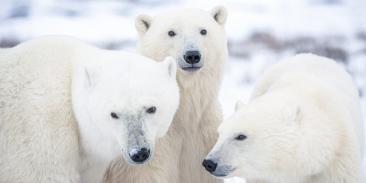Unique Agreement To Bring Endangered Hawaiian Bird Back To Island
Environmental Defense today praised a just-announced novel conservation agreement with a private ranching company in the state of Hawaii that will give the state bird, an endangered goose, a new lease on life. Under the plan, the endangered Hawaiian goose, or nene, will be introduced into the wild on private ranchland on the island of Molokai, where the bird has not occurred in centuries. The agreement that will allow this to happen is the latest in a series of endangered species “safe harbor” agreements built on a model developed five years ago by Environmental Defense, a private conservation organization.
The nene became the state bird of Hawaii in 1957. At that time, prospects for its survival were grim. It had nearly disappeared during the previous decade as a result of the combined effects of overhunting, habitat loss, and predation by introduced animals such as mongooses, feral cats and dogs, and wild pigs. A captive breeding program was initiated in 1949, and since then more than 2,000 captive-bred nene have been returned to the wild. At present small populations of this bird occur on three of the Hawaiian islands: Hawaii, Maui and Kauai.
An agreement recently reached between the Hawaii Department of Land and Natural Resources and the Puu O Hoku Ranch company is intended to give the geese a foothold on a fourth island, Molokai. Although there are archaeological records of the goose on Molokai, it had probably disappeared from there by the time Captain James Cook first visited the islands in 1778.
The land where the nene will be introduced lies at the eastern end of Molokai, near an area known as Cape Hawala. The introduction site is part of an active cattle ranching operation. Nenes are known to forage in cattle pastures, and the continuation of ranching operations is expected to be compatible with the bird’s needs. The ranch will also assist in controlling non-native predatory animals in the vicinity of the release site.
“Private landowners have sometimes been reluctant to allow endangered species to be released on their land because of fear that the presence of such species will result in land use restrictions,” said Michael Bean, head of the wildlife program for Enivronmental Defense. “ ‘Safe harbor agreements like the one that will be used to benefit the nene get around those fears by assuring landowners that their cooperation in conservation efforts will not result in new land use restrictions.”
The first safe harbor agreement in the nation was developed in North Carolina in 1995 by Environmental Defense for another endangered bird, the red-cockaded woodpecker. Similar agreements are in place elsewhere, including one in Texas where North America’s rarest falcon, the northern aplomado falcon, has been reintroduced onto private cattle ranches.
The nene agreement was recently approved by the board of the Hawaii Department of Land and Natural Resources. After a 60-day public comment period, it is expected to receive final approval.
With more than 3 million members, Environmental Defense Fund creates transformational solutions to the most serious environmental problems. To do so, EDF links science, economics, law, and innovative private-sector partnerships to turn solutions into action. edf.org
Latest press releases
-
Proposal Would Guarantee Public Access to Air Quality Data
December 18, 2025 -
New Bill Will Help Keep Domestic Manufacturers Competitive
December 17, 2025 -
Satellite Data Shows Colorado Oil & Gas Methane Emissions Dropped as State Rules Took Effect
December 17, 2025 -
EDF Europe: Energy Council Signals Shift to Delivery on EU Methane Regulation
December 17, 2025 -
Trump Administration Forces Washington’s Last Coal Plant to Stay Open Past Retirement, Needlessly Driving up Electricity Bills and Harming Health
December 17, 2025 -
EDF Celebrates Finalization of Canada’s Oil and Gas Methane Regulations
December 16, 2025










